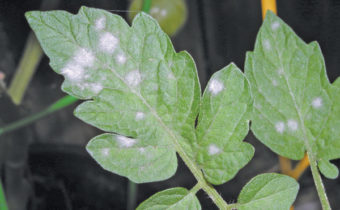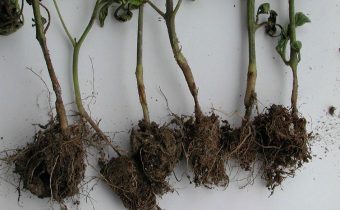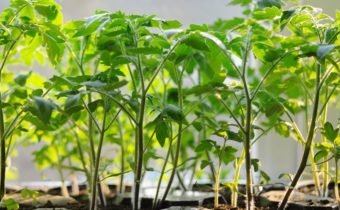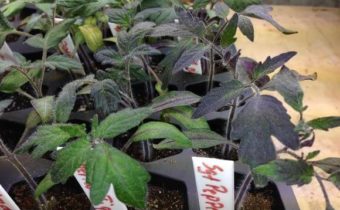At the tomato seedling leaves twisted, what to do?
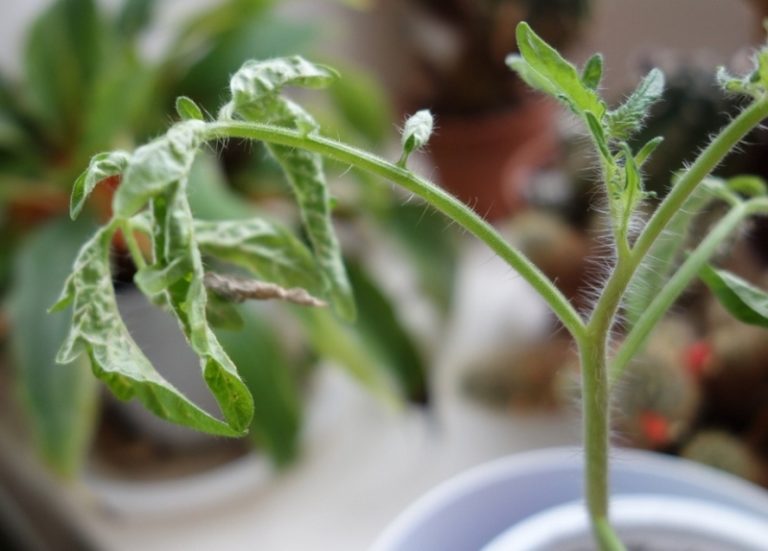
A change in the color and shape of the leaves of tomato seedlings reasonably cause concern. So the plant signals that there are problems. The cause of the twisted leaves can be bad care, disease, insects, nutritional deficiencies.
There are tall varieties of tomato with thin leaf plates. For them, the deformation rate. Light curliness is their genetic trait that does not affect the yield. It is observed in varieties: "Fatima", "Japanese crab", "Honey drop".
Wither and fall cotyledon leaves
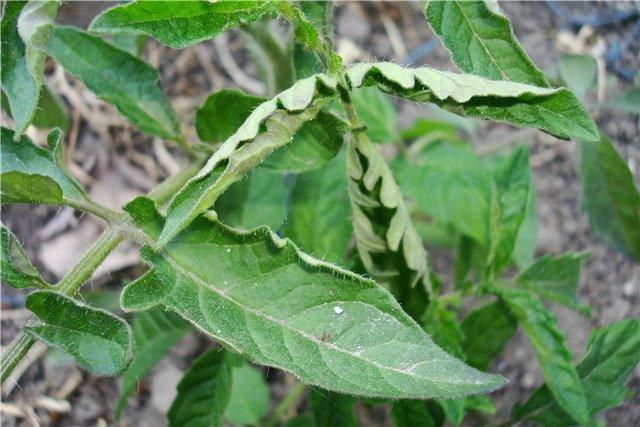 The seedbed leaves are the 2 first leaves that emerge from the germinal leaves during seed germination. They have a lanceolate or narrow elliptical shape. Their purpose is to feed the roots of the seedling. When 4-5 true leaves appear, the cotyledons begin to curl, wither and fall.
The seedbed leaves are the 2 first leaves that emerge from the germinal leaves during seed germination. They have a lanceolate or narrow elliptical shape. Their purpose is to feed the roots of the seedling. When 4-5 true leaves appear, the cotyledons begin to curl, wither and fall.
No need to panic. This is not a problem, not a disease, but a natural process. The cotyledons fulfilled their function, provided the seedling with food in the first days of life. They start to grow old. The functions of formation, accumulation of organic substances through photosynthesis begin to perform the real leaves of the seedlings.
Dome-shaped leaves on tomato seedlings
Do the tomatoes curl and become fragile young leaves. The edges of old leaves are bent; they become dome-shaped. Symptoms of interstitial chlorosis appear in the form of sunken spots. Sheet plates wrinkle, die over time.
Magnesium deficiency is the cause of dome-shaped leaves on tomatoes. Its disadvantage occurs in the following cases:
- poor soil that contains a lot of potassium or application of an excessive amount of potash fertilizers;
- enhanced nitrogen nutrition;
- sour soil;
- high content of calcium chloride in the soil.
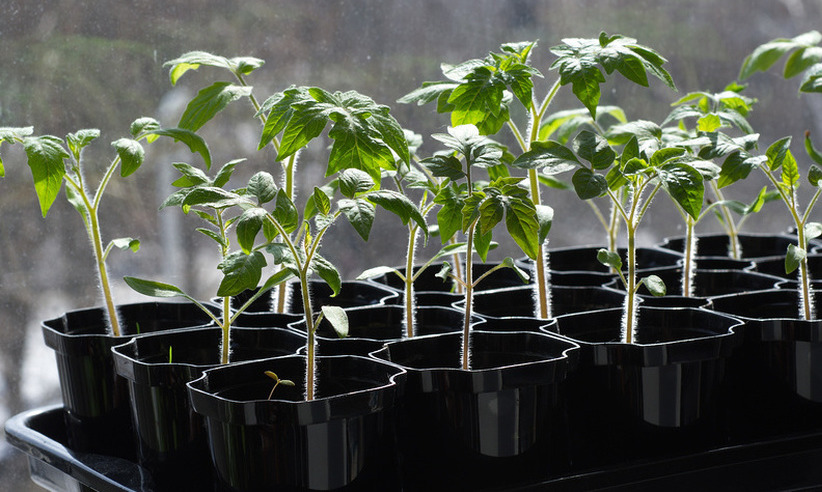
Magnesium tomatoes are needed constantly. It depends on the intensity of photosynthesis, it affects the flow of nutrients through the roots. Deficiency leads to stunted growth. Make up for the lack of magnesium complex fertilizer Magnesium sulfate (Mg 16.7%, S 13.3%):
- under the root - 30 g per 10 liters of water;
- on the sheet - 15 g per 10 liters of water.
In the solution of magnesium sulfate for spraying is to add 5 g of urea, this will protect the above-ground part of the tomato from burns.
Why do seedlings have leaves in a boat
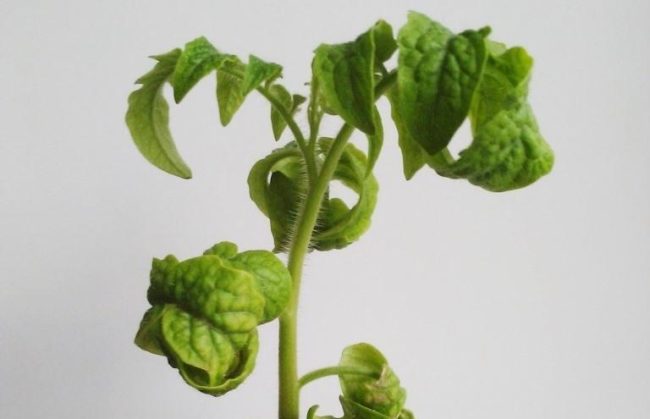 It happens that a seedling growing in indoor conditions, the edges of the leaves rise to the top. If you look at them from the side, they look like a boat. The reason is dry air, the proximity of the battery, rare watering, high air temperature.
It happens that a seedling growing in indoor conditions, the edges of the leaves rise to the top. If you look at them from the side, they look like a boat. The reason is dry air, the proximity of the battery, rare watering, high air temperature.
Solve the problem simply:
- transfer seedlings to a cool room;
- air the room several times a day;
- at noon, cover from the bright sun;
- Abundantly watered at least 1 time per week.
Tomato leaves twisted down
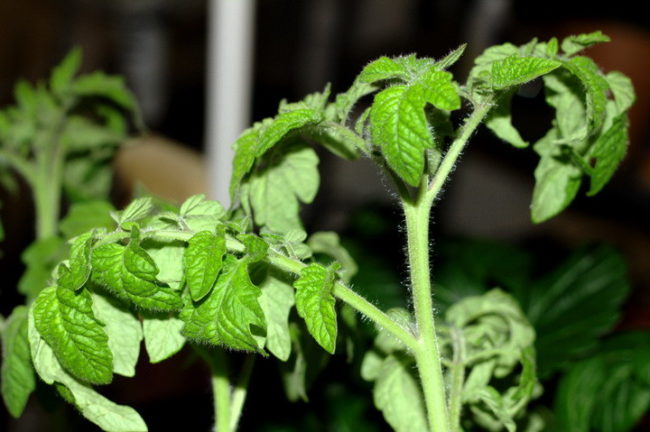 The leaves of the seedling rolled down indicate the distortions in mineral nutrition. Most likely, it is heavily fed with nitrogen fertilizers, forgetting about phosphorus and potassium. A tomato overfed with nitrogen has thick stems and leaves are curled down.
The leaves of the seedling rolled down indicate the distortions in mineral nutrition. Most likely, it is heavily fed with nitrogen fertilizers, forgetting about phosphorus and potassium. A tomato overfed with nitrogen has thick stems and leaves are curled down.
In this case, the fattening plants should be watered once and liberally - wash the nitrogen compounds from the soil. Then stop watering for a while.Causes of deformation of tomato leaves with an unbalanced diet:
- the rapid growth of veins;
- slow leaf plate growth.
If the color remains green, then as the seedlings grow, the problem will go away without additional efforts from the gardener. When the color changes, the plants need additional feeding.
| Element | Symptoms of deficiency | Solution to the problem |
| Phosphorus | The edges rise, the color gets a purple hue | Pour 1 liter of boiling water 1 tbsp. granules of superphosphate, insist 8 hours, dilute 0.5 l of suspension in 10 l of water, pour tomatoes under the root |
| Potassium | Young leaves curl into a tube, brown or yellow-brown spots appear on old ones | In 10 liters of water dilute 1 tbsp. l potassium nitrate, watered at the root |
| Zinc | The edges are bent up, the surface is covered with gray-brown spots. | 5 g of zinc sulfate are dissolved in 10 l of water, the bushes are sprayed with a solution |
The roots closely
The seedling grows in a common box, it is cramped, there are not enough nutrients. She curled leaves. The same problem occurs if the seedlings swoop down in small containers. Roots over time becomes crowded. Tomato growth slows down, leaves curl even with regular watering.
In this situation, urgently engaged in transplanting seedlings into a larger container. Fill it with high-quality soil, consisting of equal parts of turf land, humus and bottom peat. Tomato seedlings can be transplanted several times. This has a good effect on the development of the root system.
Diseases and pests
On the bushes of tomatoes infected with viruses, the leaves on the crown twist and change color. Curly - insidious disease, not treatable. Because of the defeat of the root system, plants inevitably die. Infection occurs through the soil and seeds. Protect seedlings through preventive measures:
- disinfect seeds with a 20% hydrochloric acid solution;
- disinfect the planting soil with a solution of potassium permanganate.
The deformation of the leaf plates occurs when using growth stimulants.
The cause of the twisted leaves are insects. They suck the juice, cover the surface with sticky secretions. Photosynthesis is broken. Fabric sheet plates are thinning. Spots appear on the surface. When inspecting problematic bushes you can find pests:
- whitefly;
- thrips;
- aphid;
- spider mite.
From pests, tomato bushes are treated with insecticides. From thrips, spider mites, aphids, whiteflies use Confidor.
A tomato seedling growing in comfortable conditions does not have deformed leaf plates. When they appear, the plants need emergency help. What measures to take, you can decide after a visual assessment of changes - colors, shapes, stains, other defects.


